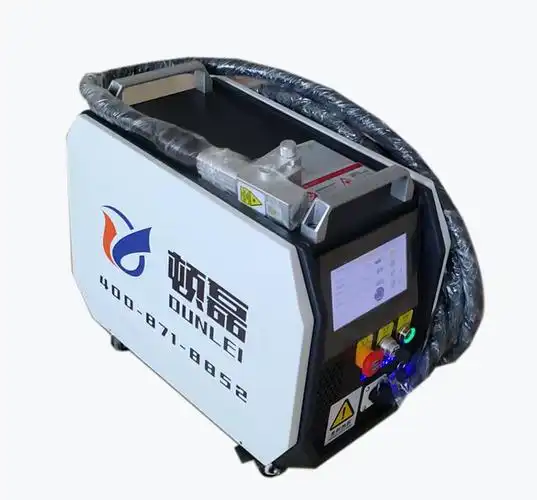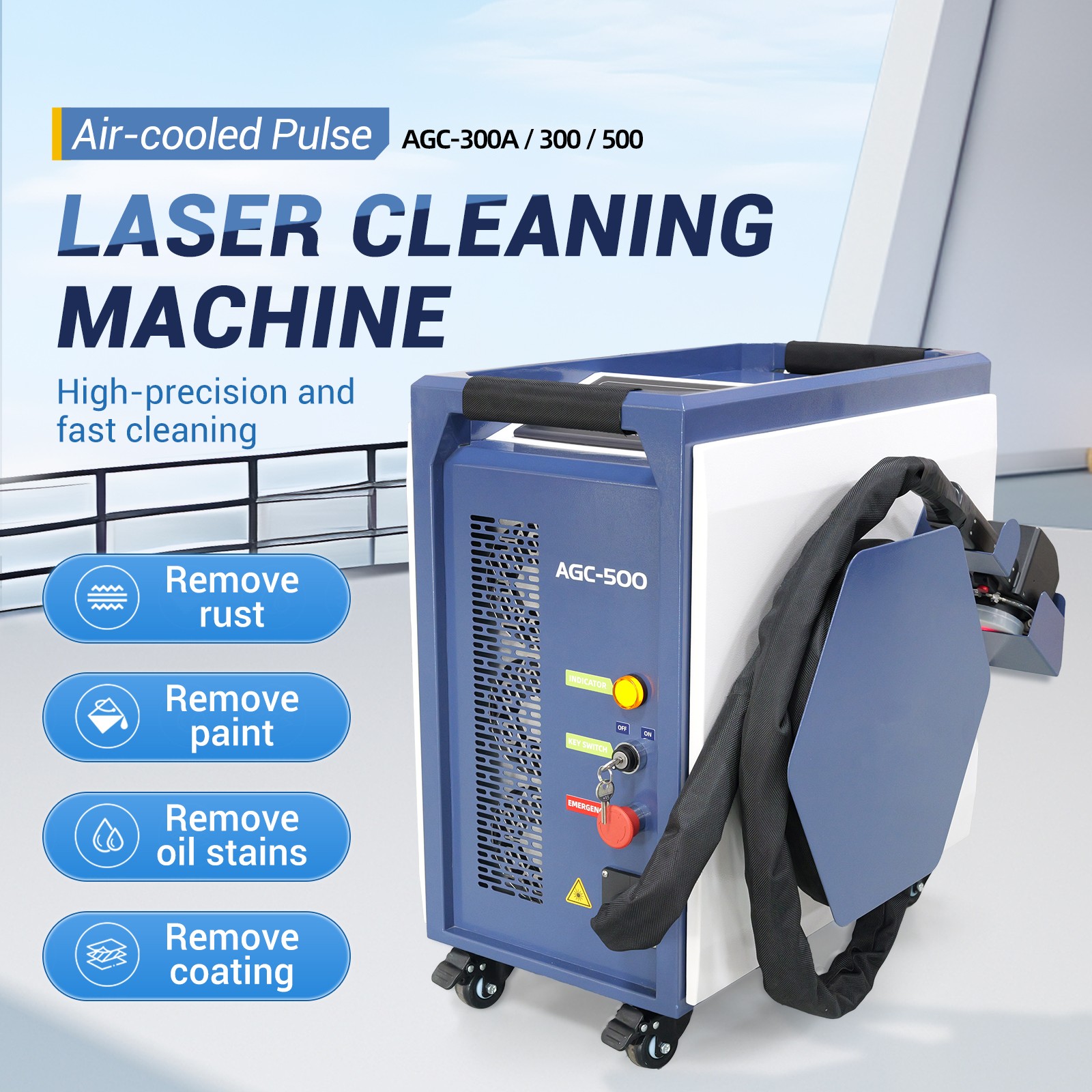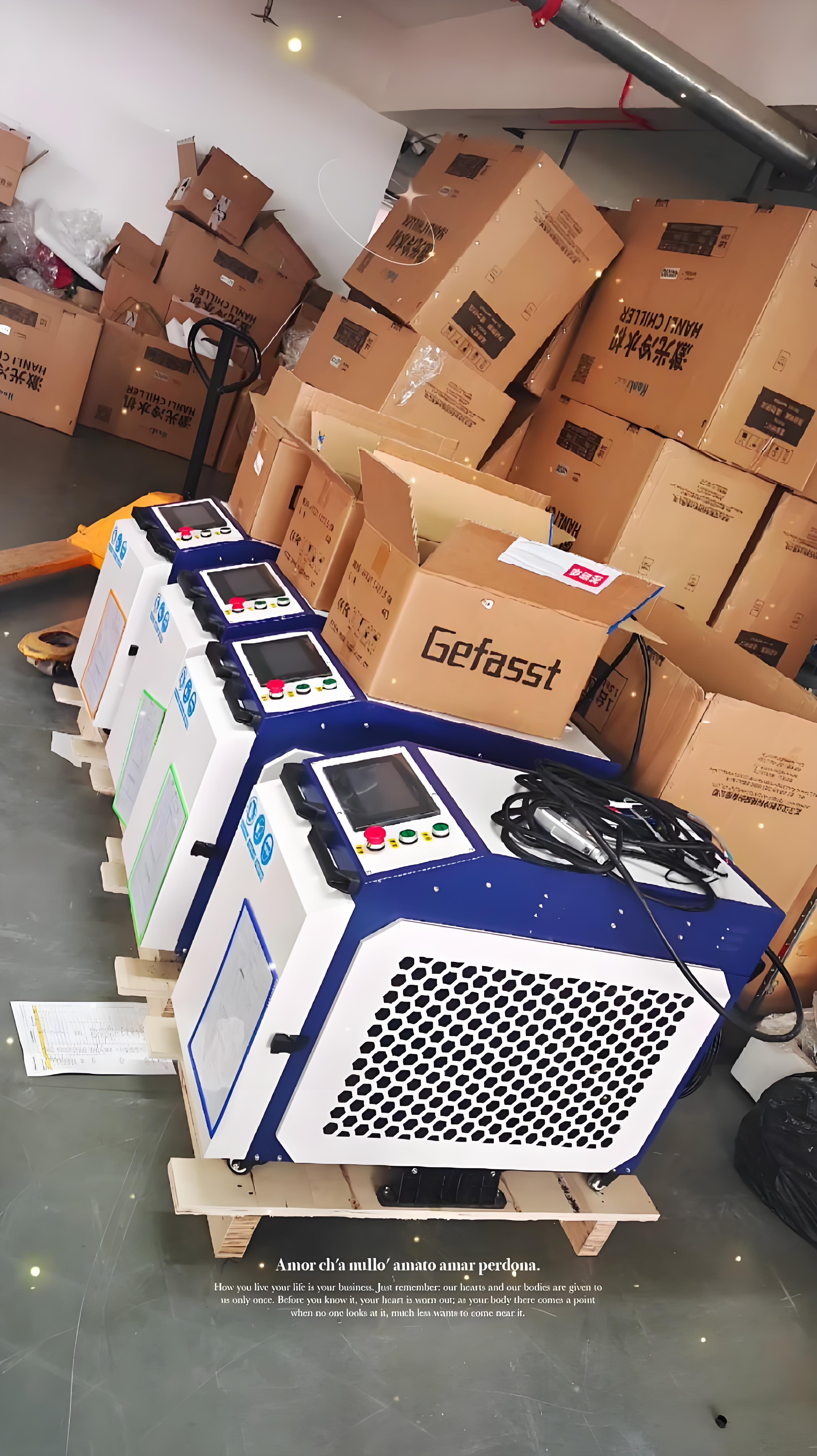As someone who’s spent over a decade in the industrial cleaning and surface treatment industry, I’ve witnessed firsthand the evolution of rust removal technologies. From abrasive blasting to chemical treatments, the tools we use have come a long way. But in recent years, laser rust removal machines have stolen the spotlight, and for good reason. They’re precise, eco-friendly, and incredibly efficient. However, one question I often hear from clients, colleagues, and curious newcomers alike is: Do these machines support smart control? It’s a valid concern in an era where automation and intelligent systems are transforming industries. Let me share my insights, experiences, and a deep dive into how smart control integrates with laser rust removal technology.

What Are Laser Rust Removal Machines?
Before we get into the nitty-gritty of smart control, let’s establish a baseline. Laser rust removal machines use high-energy laser beams to vaporize rust, oxide layers, and other contaminants from metal surfaces. Unlike traditional methods like sandblasting or chemical cleaning, lasers work without physical contact, leaving the underlying material intact. They’re widely used in industries like manufacturing, automotive, aerospace, and even cultural heritage restoration.
I remember my first encounter with a laser rust removal machine at a factory in 2015. The operator aimed a handheld laser at a rusted steel beam, and within seconds, the surface gleamed like new. No dust, no chemicals—just precision. Since then, I’ve seen these machines evolve, and smart control is one of the most exciting advancements.
The Rise of Smart Control in Industrial Equipment
Smart control refers to the integration of intelligent systems—think sensors, IoT (Internet of Things), automation, and data analytics—into machinery to enhance performance, efficiency, and user experience. In industrial settings, smart control can mean anything from automated parameter adjustments to real-time monitoring via a mobile app.
Why does this matter for laser rust removal? Well, rust removal isn’t a one-size-fits-all process. Different metals, rust thicknesses, and surface conditions require specific laser settings (e.g., power, pulse frequency, or beam focus). Manually tweaking these settings can be time-consuming and prone to human error. Smart control promises to simplify this, but does it deliver? Let’s explore.
Do Laser Rust Removal Machines Support Smart Control?
The short answer is yes, many modern laser rust removal machines support smart control, but the extent and sophistication vary by model, manufacturer, and application. To give you a clearer picture, I’ve broken this down into key aspects of smart control and how they apply to these machines.
1. Automated Parameter Adjustment
One of the standout features of smart laser rust removal machines is their ability to automatically adjust parameters based on the material and rust condition. For instance, high-end models use sensors to detect the thickness of rust or the type of metal (e.g., steel, aluminum, or copper). The machine then optimizes settings like laser power, pulse duration, and scanning speed.
I recall a project where we were cleaning rusted ship components. The machine we used had a built-in spectrometer that analyzed the surface in real time. It adjusted the laser intensity to avoid overheating delicate areas while still blasting through thick rust. This kind of automation saved us hours of manual calibration and ensured consistent results.

2. IoT Integration and Remote Monitoring
Many modern laser rust removal machines are IoT-enabled, meaning they can connect to the internet for remote monitoring and control. This is a game-changer for large-scale operations. Imagine managing multiple machines across a factory floor from a single dashboard or even checking their status from your phone while you’re off-site.
At a recent trade show, I saw a demo of a laser system integrated with a cloud-based platform. The operator could track performance metrics like energy consumption, operating hours, and maintenance needs in real time. If the machine detected an issue—like a lens needing cleaning—it sent an alert to the technician’s phone. This level of connectivity isn’t universal yet, but it’s becoming standard in premium models.
3. User-Friendly Interfaces
Smart control isn’t just about automation; it’s also about making machines easier to use. Many laser rust removal systems now come with touchscreen interfaces or companion apps that let operators input parameters, save presets, or monitor progress. Some even offer guided setups for beginners.
I once trained a team of new operators on a smart-controlled laser machine. The interface was so intuitive that they were running it confidently within a day. Compare that to older models, where you needed a week of training just to understand the controls. These advancements make the technology accessible to smaller businesses or teams with limited technical expertise.
4. Safety Features
Safety is a top priority in any industrial setting, and smart control enhances it significantly. Modern laser rust removal machines often include smart safety systems like motion sensors, automatic shut-off, and real-time diagnostics. For example, if the laser detects an obstruction or an unsafe operating condition, it pauses immediately.
I’ve seen this in action during a restoration project on a historic bridge. The machine’s sensors detected an uneven surface and halted the laser to prevent damage. Without smart control, we might have overlooked the issue and caused costly repairs.
5. Data Analytics and Predictive Maintenance
Some advanced models go beyond basic operation and offer data analytics for performance optimization. These machines log data on usage patterns, energy efficiency, and wear-and-tear on components like the laser source or focusing lens. Predictive maintenance algorithms can then warn you when parts need replacement before they fail.
In one factory I consulted for, this feature reduced downtime by 30%. The machine flagged a potential issue with the cooling system, allowing the team to address it during scheduled maintenance rather than dealing with an unexpected breakdown.

Comparing Smart Control Features Across Models
To give you a practical overview, I’ve compiled a table comparing smart control features in three categories of laser rust removal machines: entry-level, mid-range, and high-end. This is based on my experience with various brands and models over the years.
| Machine Type | Automated Parameter Adjustment | IoT/Remote Monitoring | Advanced Safety Features |
|---|---|---|---|
| Entry-Level | Basic presets, manual tweaks needed | Limited or none | Standard interlocks |
| Mid-Range | Sensor-based adjustments | Basic IoT connectivity | Motion sensors, auto shut-off |
| High-End | Real-time material analysis | Full IoT with cloud dashboard | Comprehensive diagnostics |
Note: Features vary by manufacturer. Always check the specs before purchasing.
Entry-level machines are great for small workshops or hobbyists, but their smart control is minimal—think pre-programmed settings rather than dynamic adjustments. Mid-range models strike a balance, offering some automation and connectivity without breaking the bank. High-end systems, often used in large-scale industrial settings, provide the full suite of smart features but come with a higher price tag.
Real-World Applications of Smart Control
To illustrate the impact of smart control, let’s look at a couple of scenarios where it shines.
Scenario 1: Automotive Restoration
A client I worked with restored vintage cars, where precision is critical to avoid damaging delicate metal surfaces. Their laser rust removal machine used smart sensors to adjust the laser intensity based on the thickness of the rust and the underlying paint. The result? Flawless rust removal without stripping the original paint, all with minimal operator input.
Scenario 2: Industrial Maintenance
In a steel manufacturing plant, downtime is the enemy. The facility I visited used IoT-enabled laser machines to clean rust from production equipment. The smart system allowed managers to monitor multiple machines remotely, schedule maintenance during off-hours, and optimize settings for different steel alloys. This reduced maintenance time by 25% compared to traditional methods.

Challenges and Limitations
While smart control is impressive, it’s not without challenges. For one, cost can be a barrier. High-end machines with full smart capabilities often cost tens of thousands of dollars, which may not be feasible for small businesses. Additionally, connectivity issues can hinder IoT features in remote locations with poor internet access.
Another concern is the learning curve. While interfaces are user-friendly, fully leveraging smart features like data analytics requires some technical know-how. I’ve seen teams struggle to interpret performance data without proper training. Lastly, not all manufacturers offer robust software updates, so some “smart” machines may become outdated quickly.
Tips for Choosing a Smart-Controlled Laser Rust Removal Machine
If you’re considering investing in a laser rust removal machine with smart control, here are some practical tips based on my experience:
Assess Your Needs: Determine whether you need basic automation or full IoT integration. A small workshop might not need cloud connectivity, but a large factory could benefit significantly.
Check Compatibility: Ensure the machine’s software integrates with your existing systems (e.g., factory management software).
Ask About Updates: Choose a manufacturer that provides regular firmware and software updates to keep the smart features current.
Test the Interface: If possible, demo the machine to ensure the interface is intuitive for your team.
Consider Scalability: If you plan to expand, opt for a model that can grow with your needs, such as one with modular IoT upgrades.
The Future of Smart Control in Laser Rust Removal
Looking ahead, I’m excited about where this technology is headed. Manufacturers are already experimenting with AI-driven laser systems that can learn from past jobs to optimize future performance. Imagine a machine that “remembers” how to clean a specific type of rust on a specific alloy and applies those settings automatically. We’re also seeing advancements in augmented reality (AR) interfaces, where operators can use AR glasses to visualize laser paths and monitor progress in real time.
I recently spoke with an engineer at a trade conference who hinted at upcoming models with integrated machine learning. These could potentially predict rust patterns based on environmental data (e.g., humidity or salt exposure), further streamlining the process. While these features are still in development, they signal a bright future for smart-controlled laser rust removal.

Final Thoughts
As someone who’s seen the rust removal industry evolve, I can confidently say that smart control is transforming laser rust removal machines. From automated parameter adjustments to IoT connectivity and advanced safety features, these systems make the process faster, safer, and more efficient. Whether you’re a small business owner restoring vintage cars or a factory manager maintaining heavy equipment, there’s a smart-controlled laser machine that can meet your needs.
That said, it’s not a one-size-fits-all solution. Consider your budget, technical expertise, and operational scale before investing. With the right machine, you’ll not only remove rust but also unlock a level of precision and efficiency that traditional methods can’t match.

Related Questions and Answers
Q: Can smart-controlled laser rust removal machines be used by beginners?
A: Yes, many models are designed with user-friendly interfaces, including touchscreen controls and guided setups. However, some training is recommended to fully utilize advanced features like data analytics or IoT integration.
Q: Are smart laser rust removal machines safe for delicate surfaces?
A: Absolutely. Smart sensors can adjust laser settings to avoid damaging delicate materials. Always test on a small area first and choose a machine with real-time material analysis for best results.
Q: How do I know if a machine’s smart control features are worth the cost?
A: Evaluate your workload and goals. If you handle high-volume or complex projects, features like automation and remote monitoring can save time and reduce errors, justifying the investment. For smaller tasks, a basic model might suffice.
Q: Do all laser rust removal machines come with IoT features?
A: No, IoT is typically found in mid-range to high-end models. Entry-level machines may offer basic automation but lack connectivity. Check the manufacturer’s specs to confirm.
Q: What maintenance is required for smart-controlled laser machines?
A: Regular maintenance includes cleaning the laser lens, checking the cooling system, and updating software. Smart machines often have predictive maintenance features that alert you to potential issues before they cause downtime.






